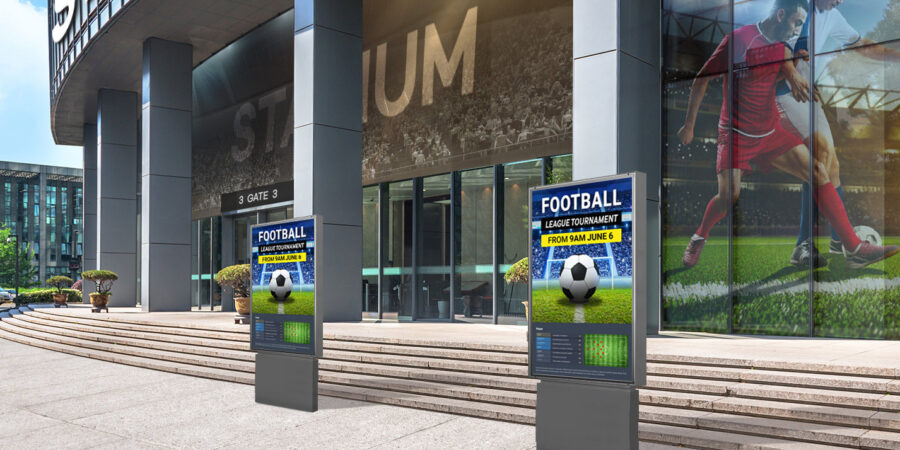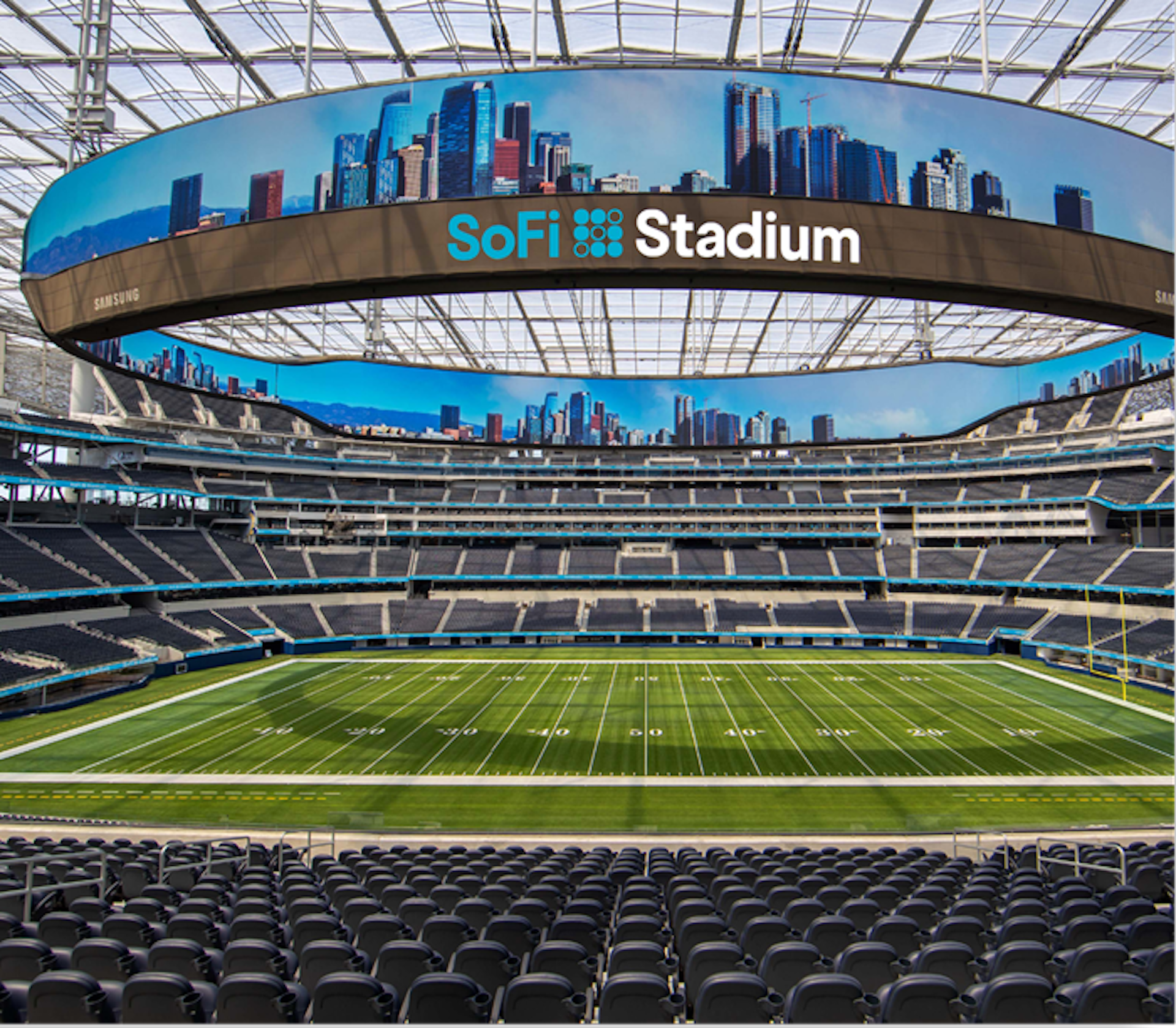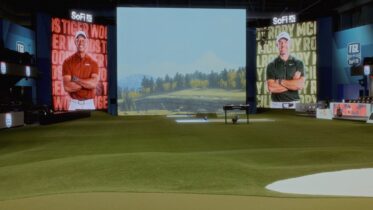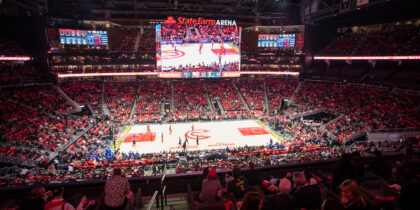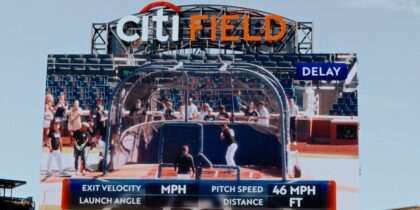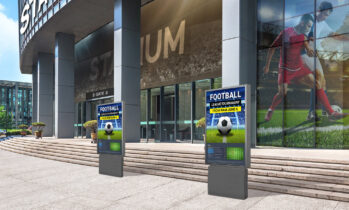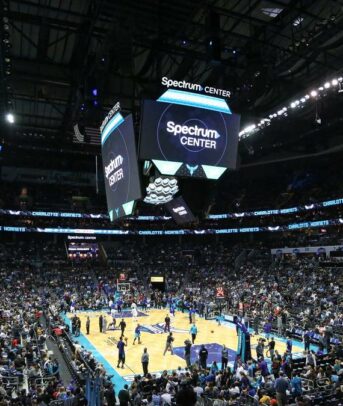The most regular-season games any NFL team will host in their home stadium is nine. To avid football fans, this number might not be surprising, but when you weigh the revenue opportunities against the amount of money venues invest in a stadium, nine games per year simply is not enough for sports organizations to create multiple revenue streams and reach profit goals. Today, stadiums must be designed and equipped to support other types of events in addition to their core purpose. Technology is a central element in creating a dynamic venue that allows the flexibility to host numerous events.
These days, when I talk to sports organizations, they refer to themselves as being in the entertainment and live event business. They intentionally do not present themselves as a one-dimensional entity. And while sports may be the core reason for being, sales, marketing, partner and stadium personnel openly convey their need for a multipurpose venue that can easily support a wide array of events and attractions. Furthermore, sports organizations’ venues also have to compete with the home viewing experience. More fans are watching games and events in their living rooms as the cost of HD TVs continues to drop and the quality of broadcasts becomes more and more premium.
The challenge modern event venues are facing everywhere is justifying the costs — hundreds of millions of dollars and more — against fickle fan attendance. Furthermore, fan expectations for spectacular experiences are constantly rising.
Flexible venues with multifunctional spaces
Below are three trends I’m seeing in the live events market that are aimed at capturing a variety of audiences through spectacular — and dynamic —technology:
1. LED displays in another league
Perhaps the most obvious way to capture new, live-event audiences is through spectacular technology. Digital LED signage and video displays play a fundamental role in that. Watching a game or concert on your TV can’t compete with witnessing it on a giant end-zone or center-hung scoreboard and jaw-dropping videoboard — just as staying at a roadside motel is nothing like the luxury and experience of a five-star resort. Using exceptionally clear image quality, the XHB Series of LED signage by Samsung offers venue owners the opportunity to wow audiences at any type of live event, in addition to sports.
Drive revenue by surpassing venue expectations
Explore digital opportunities to deliver more immersive experiences and increase fan loyalty. Download Now
At Samsung, we’re also seeing that even if customers aren’t ready to implement true HDR in all of their venue displays, they want the technology to be HDR-compatible to keep up with the ever-changing standards of image quality. Inside the venues, the real competition is fans’ personal devices, so live event digital signage needs to provide the highest quality picture compared to what’s already in everyone’s pocket. By choosing HDR-compatible screens, venue owners can invest in high-quality displays now and know they’re future-proofing their technology.
2. Multipurpose facilities
To maximize a venue’s return on investment, team organizations must ensure usage is optimized throughout the calendar year. When professional teams are on the road, LED signage can be employed for other sports or collegiate teams. When the season ends, it can support various events and activities, such as concerts and festivals. In short, digital signage is the ideal way to create a flexible venue.
Another great thing about digital signage is how customizable and dynamic it can be. If you invest in high-quality displays throughout a venue, the content can be easily changed out for any event. Venues can host a concert on Friday and a basketball game on Sunday. This includes branding and creative elements displayed on wayfinding screens, menu boards and other digital displays throughout the arena. Such flexibility is key when designing spaces and specifying technology that will be used for several event types.
Another approach is to create multiple facilities within one venue. We’re seeing the demand to accommodate a number of events at the same time rather than having only a large arena that seats 50,000-plus.
At a stadium that hosts an NFL or NBA team, you can have a performance space for high-profile concerts, plus an engaging outdoor plaza for community events. With multiple facilities under one roof, your venue can diversify its brand and open itself up to new audiences that might otherwise exclusively associate arenas with sports.
The Chase Center in San Francisco is a great example. In addition to serving as the home of the Golden State Warriors, it hosts yoga classes, farmers markets and festivals in Thrive City — the venue’s 11-acre, mixed-use complex. It’s a beautiful gathering space for the community and a leading example of how venue owners can bring customers into their facilities for more experiences and longer amounts of time.
3. Enhanced fan experience
Our customers realize that it costs a large amount of money to get an attendee to their venue in the first place. Furthermore, we need people to arrive earlier before the event begins and stay on-site longer after the event ends.
Owners are creating ways for attendees to have fuller experiences, and display technology plays a key role in helping increase revenue at venues. Touchscreen kiosks, for example, are simple to deploy throughout a venue and encourage visitors to enter earlier by providing streamlined entry, clear wayfinding and quick concession ordering that minimizes queues. Kiosks installed at food-and-beverage concession stands and team stores can make the experience more user-friendly and efficient to increase customer throughput, thus increasing revenue.
A new trend is staying at the venue after events end to celebrate rather than immediately going off-site to eat or drink. Restaurants and bars can be a place to watch other games, while some venues are even transitioning on-site bars into nightclubs for truly memorable post-event entertainment.
As attendees seek greater live experiences, venues are doubling down on hospitality offerings, too. Premium and VIP experiences are great revenue generators for a venue, and top-paying customers expect a high level of quality to go with their tickets. As such, suites and lounges outfitted with Samsung Wall All-in-One displays deliver a wow moment with stunning immersive screens that can be any shape or size.
Incorporating state-of-the-art displays, housing multiple facilities under one roof and designating venue grounds as community centers are just a few ways Samsung is helping customers get the most out of their investments and increase the reach of venues.
For live events of every kind, there’s a Samsung display that can light up your venue and attract guests — while keeping you on budget. You can discover new ways venues are driving revenue and fan loyalty in this free guide.
